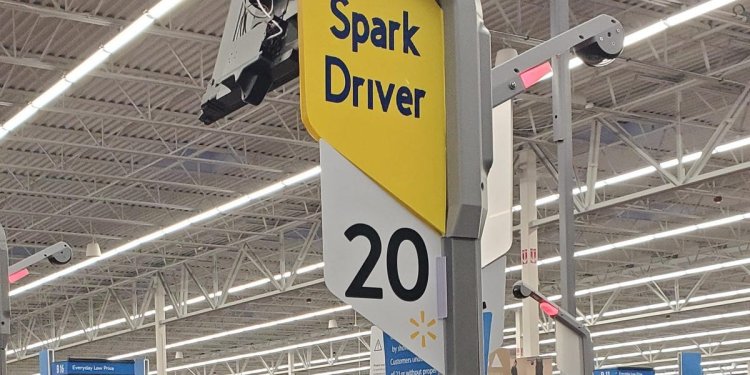Some Walmart stores are limiting self-checkout lanes just for Spark drivers and Walmart+ customers
Walmart shoppers at some stores will need to have an active online account with the retailer to access the in-store, self-service stations.

Insider Source
- Some Walmart shoppers may need to log into an app before they can use self-checkout.
- Self-service lanes in some locations are being reserved for Spark drivers or Walmart+ members.
- Target has also introduced limitations to self-checkout as retailers rethink the role of the tech.
You might need an app on your phone to use self-checkout during your next trip to Walmart — the lanes might be one reserved for the retailer's Spark delivery drivers or Walmart+ subscribers.
Drivers with the company's Spark delivery platform told Business Insider they've seen the limited kiosks at their stores, and photos showing cordoned-off lanes have been cropping up on social media over the past few weeks.
At these stores, shoppers need to use the full-service lanes unless they're buying for themselves using the Walmart app's scan-and-go feature or for someone else using the Spark app.
Walmart spokesperson Joe Pennington told BI that the move is not a directive from the corporate office and pointed out that store managers have discretion to experiment and figure out what works best for their customers and employees.
"Based on several factors including customer and associate feedback, shopping patterns, and business needs, some locations are temporarily testing different checkout staffing options," he said.
Pennington said the lane restrictions are more like limiting express lanes to 10 items or fewer — and they're not intended to drive more sign-ups for $98/year Walmart+ memberships.
A Spark driver in California told BI that designated lanes for Spark drivers showed up at a store there at the end of February.
The registers are closed when not in use, the driver said, which means he has to take an extra step compared to a normal self-checkout.
"Currently, we take any shopping orders to those registers and await assistance from a service desk associate," the driver said.
"They will come over, open the register, and we scan the QR code," he added, referring to a code that workers shopping Spark orders have to show before they ring up an order.
"If no cart check comes up on the app, we are good to go," the driver added.
Some Target locations have also rolled out similar changes to self-checkout recently, from limiting item counts to 10-or-less, to reducing the hours the lanes are open.
Retailers have been rethinking their approaches to self-checkout in the past year as a combination of softening sales and sticky shoplifting are putting a squeeze on profitability.
A recent study also found that self-checkout contributes to a phenomenon known as "partial shrink," where customers accidentally fail to properly scan and pay for all of the items in their transaction.
Requiring shoppers to log in to an account before using self-checkout could help stem some of those losses.
Do you work for Walmart or Spark and have a story idea to share? Reach out to these reporters at [email protected] and [email protected]
What's Your Reaction?




















